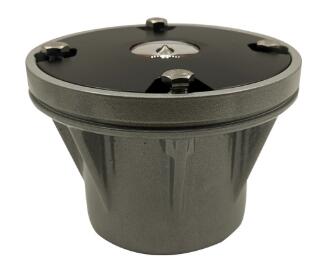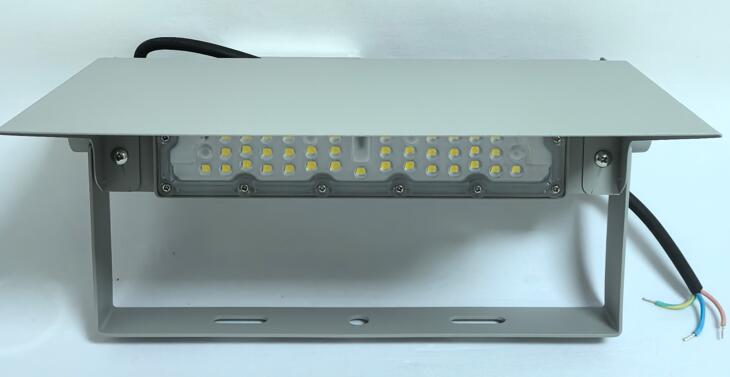Helicopter landings require precision, especially in confined or complex environments such as hospitals, offshore platforms, and emergency zones. To ensure that pilots can safely approach and land, visual guidance is essential. One of the most important aspects of this guidance is the use of helipad light colors. These colors help pilots assess their position during the approach phase and provide clear indications about the condition of the landing area. In this article, we will explore the significance of helipad light colors, their meanings, and how they contribute to safe helicopter operations.
What Are Helipad Light Colors?
Helipad light colors are a set of standardized lighting signals used to indicate different conditions or directions during helicopter landings. These lights are typically installed around the perimeter of the helipad or in specific locations to provide critical visual guidance to pilots. The use of various colors in the lighting system is crucial for pilots to safely identify the landing zone, adjust their approach, and execute a precise landing.
The color scheme and positioning of helipad lights are designed to convey specific information to pilots. Each color has a particular meaning, allowing pilots to make real-time decisions regarding their approach and landing. These light colors are standardized globally, ensuring consistency and reducing the risk of confusion.

The Common Helipad Light Colors and Their Meanings
Green Lights: Indicating Safe Approach
Green lights are perhaps the most important in the helipad lighting system. They typically indicate that the helicopter is on the correct approach path and that the landing zone is clear and safe for landing. A green light is a signal to the pilot that the descent can continue smoothly.
On most helipads, green lights are positioned at the end of the approach path, guiding the pilot toward the helipad. A steady green light is a sign that the pilot’s altitude and trajectory are correct, providing confidence during the final stages of the approach. Green lights may also be used in the center of the landing zone to indicate the location of the helipad itself.
Red Lights: Warning of Danger or Incorrect Approach
Red lights are used to warn pilots that something is wrong, usually indicating that the helicopter is either too low on the approach path or there is an obstacle ahead. These lights signal that the pilot should correct their approach to avoid a potential hazard.
Red lights can be found on the edges of the helipad or along the approach path to mark the limits of the landing zone or to alert pilots to obstacles, such as nearby structures, that need to be avoided. A flashing red light can also indicate a potentially dangerous situation, such as a misaligned approach or obstacles in the helicopter’s flight path that require immediate attention.
Amber or Yellow Lights: Cautionary Signals
Amber or yellow lights are used as cautionary signals. These lights tell the pilot that they are either too high or approaching the helipad too quickly. Amber lights can also indicate that the helicopter is approaching from an undesirable angle, requiring adjustment for a safer landing.
Amber lights may be placed along the approach path or around the perimeter of the helipad. These lights do not indicate an immediate danger but serve as a warning to pilots to correct their approach before it becomes critical. For example, if a pilot sees amber lights, they may need to adjust their descent speed or angle to avoid going off-course.
White Lights: Denoting the Landing Area
White lights are commonly used to mark the boundary of the helipad or the center of the landing zone itself. These lights are helpful in defining the perimeter of the landing area and allowing the pilot to clearly identify where the helipad is located.
White lights may surround the edges of the helipad or be placed in a circular pattern to provide a well-defined, visible area where the helicopter can land. This is especially important for night operations, where the pilot may have difficulty distinguishing between the helipad and the surrounding terrain without these lights. They may also be used for indicating the location of emergency landing zones.

Blue and Other Colors: Special Use Cases
In some cases, additional colors such as blue may be used to indicate a specific purpose. For example, blue lights are sometimes used to highlight emergency evacuation zones or to indicate a designated helicopter approach in specific locations. Blue lighting may be seen in military or emergency settings where it is necessary to differentiate helicopter landing areas from other types of zones.
While blue lights are not standard for all helipads, their use is growing in areas with complex operational needs, such as military bases or rescue zones, where specific lighting is necessary to ensure proper coordination between air and ground operations.
The Importance of Standardization in Helipad Light Colors
The standardization of helipad light colors is a crucial factor in aviation safety. Different regions or organizations might use different lighting schemes, but the meaning behind each color remains consistent across the globe. This consistency ensures that pilots from any part of the world can rely on a universal color code when landing at various helipads.
Regulatory bodies such as the International Civil Aviation Organization (ICAO) and national aviation authorities provide guidelines on the use of helipad lighting. These regulations ensure that helipad lights are correctly installed and maintained to meet safety standards. For instance, ICAO recommends specific configurations for helipad lights, including their placement, intensity, and color, to ensure that they are effective in guiding helicopters safely.
How Helipad Light Colors Contribute to Safety
Helipad light colors provide pilots with clear, immediate, and accurate feedback about their landing approach, which directly impacts safety. Here’s how:
Guiding the Approach: Pilots rely on the colored lights to help them assess whether they are on the correct path and to make adjustments if necessary. Green lights indicate that the approach is on track, while red or amber lights alert the pilot to deviations that need correction.
| helipad light |
| helipad lights |
Reducing Errors: By providing constant visual cues, helipad light colors reduce the chance of human error. A pilot can quickly identify when they are too high, too low, or approaching from an undesirable angle, allowing them to take corrective action.
Improving Nighttime Operations: In low-visibility conditions, such as at night or in poor weather, helipad light colors are indispensable. They ensure that the pilot can still locate the helipad, assess the conditions, and land safely.
Alerting to Hazards: Red and amber lights are critical for indicating potential obstacles or hazards, such as buildings, vehicles, or other aircraft. These lights help pilots avoid collisions and maintain a safe distance from dangerous areas.
Helipad light colors play an essential role in ensuring safe and efficient helicopter landings. By providing pilots with visual cues about their position, the landing area, and potential hazards, these lights significantly enhance the safety of helicopter operations. The standardized color codes—green, red, amber, white, and sometimes blue—serve to guide pilots through every phase of their approach, from identifying the landing zone to making necessary adjustments in their flight path.
As the need for safe, precise, and efficient helicopter landings grows, particularly in urban environments, offshore oil rigs, and emergency service operations, the role of helipad light colors will continue to be crucial. Properly installed and maintained lighting systems not only facilitate successful landings but also contribute to the overall safety of aviation operations. Whether it’s a hospital rooftop or a remote rescue site, helipad light colors ensure that pilots can land safely, even in the most challenging conditions.